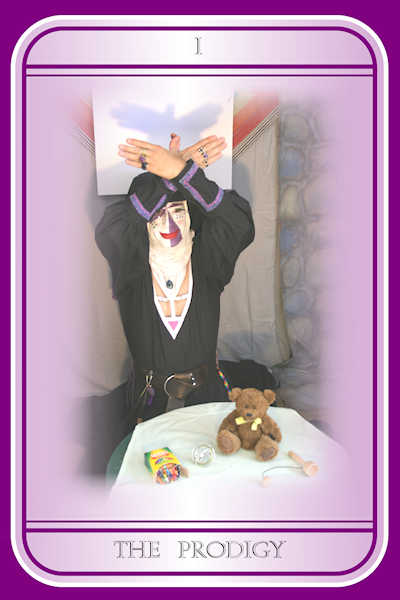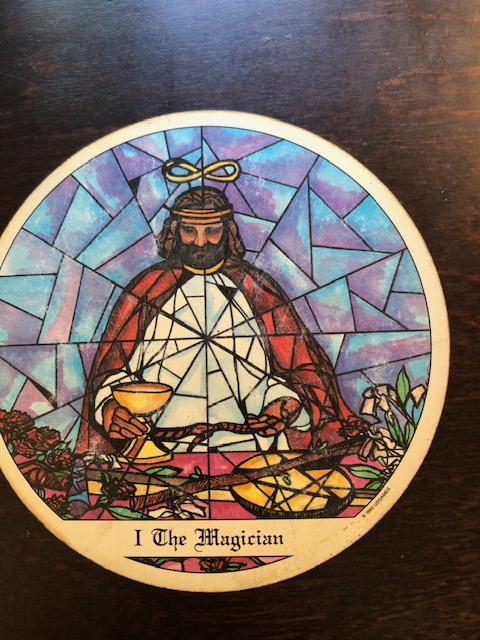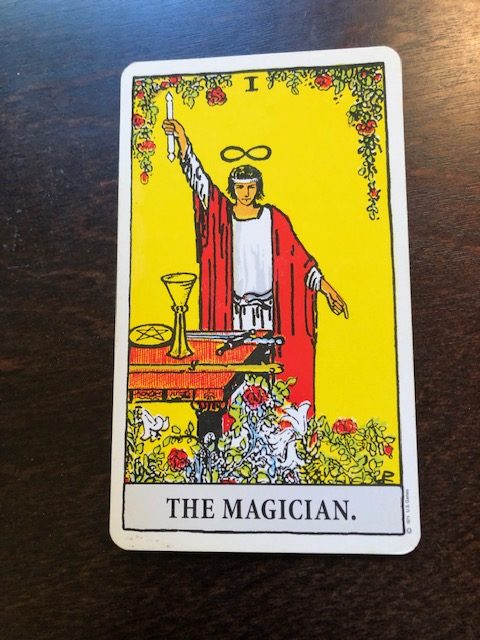
I’ve never designed a tarot deck. But I own a lot of decks that capitalize on the classic Rider-Waite images with variations in the art, colors, design. My favorite of these is Tarot of the Cloisters, which I love because the deck is round, which means no card can be reversed. I figure there are enough negative cards in a typical tarot deck so that the only things reversed cards offer is more negativity. Who needs it?
My second favorite deck is just a regular Rider-Waite, but what makes it special is that it was owned by our friend, psychic Richard “Fids” Demian, whose sister sent me the deck after Fids died. When I use it, I feel that he’s the one speaking through the cards. Another favorite deck is the one that artist and eccentric Salvatore Dali designed. Many of the images on the cards are of Dali himself or his beloved wife. But even Dali stuck to the traditional suits and general meanings.
Designing a deck that deviates from the standard suits and from the standard meanings is risky. You’re likely to be attacked by tarot purists who take exception to the smallest details – Your Magician doesn’t feature a chalice! Your Tower doesn’t have enough stuff falling out of it!
That said, Denver NeVaar has designed a deck that is fun and unusual. If you’re accustomed to reading traditional decks, The Tarot of Sister Who forces you to intuit the meanings in a different way. Take that card at the top of the post – The Prodigy. His counterpart in Tarot of the cloisters, the deck I use, is:

In the Rider Tarot, the Magician looks like this:

Regardless of the image, the meaning remains the same. The Magician is the alchemist, the transformer, and epitomizes the ability to translate ideas into action. When you draw this card, seemingly magical influences enter your life and you intuit or invent solutions to your most pressing problems. Synchronicities flourish. Your finances improve dramatically. You get the idea.
This deck also differs in that the minor suits are called Candles, Chalices, Thuribles, and Paraments instead of Wands, Cups, Swords, and Pentacles. Each suit is numbered 1-10, just like a traditional deck. But the court cards have different names. Instead of pages, knights, queens and kings, there are: confessor, celebrant, angel, and saint. Denver lays out his case for the differences in the book that accompanies the deck. And the meanings of the cards – all of them – are spot on.
The deck is available from The Game Crafter. You’ll enjoy it!








Very different. I enjoy trying new decks. Thanks for letting us know.